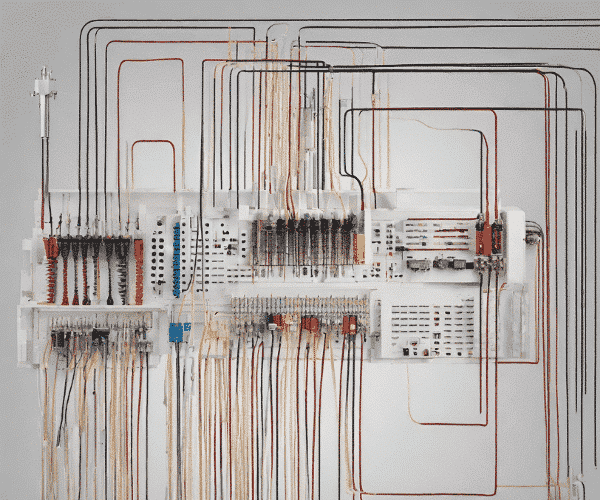
- Software
- Field Service Management
- Customer Satisfaction
4 Ways Field Service Management Software Boosts Customer Satisfaction
Field service digital transformation has also transformed people’s expectations of quality customer service. I know, stop the presses. Yet this isn’t just a hollow word salad of biz tech speak. Delivering on contemporary customer service expectations correlates to bottom-line growth in many industries, according to Forrester Research. Indeed, when they looked at the quintessential example of field service industries – cable companies – customer service leaders in this industry outperformed their competitors that provide a poor customer experience by 24 percent.
It’s not difficult to see the connection. If people have high expectations of how their online experience with automated engines and chatbots should go, how much higher are their expectations when there’s face-to-face human interaction? When it comes to providing field services, customers expect the best of both worlds: the efficiency and accuracy of the digital experience and human respect and responsiveness. This combination demands that companies relying on field service agents take advantage of field service scheduling software for the service industry to meet (and exceed) customer expectations. Here are four ways field service management solutions provide a superior customer experience:
1. Doesn’t keep the customer waiting.
Customers think of long lines at inconvenient service outposts and missed appointment windows as akin to a horrible kind of purgatory. FSM software avoids this fate in various ways:
- Optimizing field service technician schedules using location and service call data lets companies set narrow service windows, which gets the entire experience off on a good foot.
- Multiple communication channels, including directly between field service technicians and customers, empower everyone to react in real-time to changing circumstances. If one call goes longer than expected, the field service technician can send a notification back to the field service manager, who can then either task another available agent to keep the original appointment or communicate with the customer to find out what alternatives work for them. Giving customers text and online communication channels makes it easier, and thus more likely, for customers to notify the company when they have to cancel an appointment or request a time change.
- Back-end schedule optimization uses predictive analysis tools to ensure sufficient capacity of field service technicians without over-staffing. Field service managers can plan to have the right number of resources with the right mix of skills available for a given shift, which enhances the team’s flexibility to respond to the real-time schedule-messing wrinkles that inevitably occur.
2. Doesn’t make the customer repeat himself.
Customers who have to repeat, and explanation of the problem or solutions already tried to each new person trying to help them, rank high on the easy ways to annoy or frustrate your customer list. Field service management application solutions give field service technicians access to the full scope of the customer’s back story. Not just for this call, but what happened on earlier calls as well as other valuable customer history information to have. Having information about previous work orders, and previous attempts to resolve the problem, as well as seeing the improves communication from the customer, helps field service agents prepare before arriving so they can efficiently manage the service interaction in a very personalized way.
3. Doesn’t make the customer ask twice.
Speed to resolution is a crucial customer service metric. Can you fix the customer’s problem in one try? When fixing the problem means the customer has to wait around at home for someone to show up, achieving first-visit resolution is critical to providing a quality customer experience. That’s why field service management solutions do more than optimize schedules based on time and location. They also look at what skills, field service management training, and hardware inventory are available when scheduling an appointment with the customer and determine which field technician gets assigned the appointment in the first place. This ensures that all the right resources are in place to resolve the problem during the agent’s first visit.
4. Doesn’t let anyone drown in hard copies.
“Anyone” means both the field agents and customers. Using a combination of mobile platforms, touch screens, and cameras, there’s no reason for anyone to find the correct paperwork, share more paperwork, or get delayed because they don’t have the proper paperwork. The most critical data can be exported directly to the company’s ERP, customer relationship management software, human resources software, or accounting software. Field notes and photos are entered digitally into field service management apps and can even be used in real-time for senior technicians to assist the field agent onsite. Invoices and work orders can be digitally signed and instantly emailed to the customer. Digital documentation streamlines service delivery at the office and in the field.
Put the customer at the center of back-office and field operations
In its analysis of how to use field service digital transformation to enhance customer satisfaction, McKinsey analysts point out, “One typical shortcoming of traditional operating models is a strong focus on optimizing internal capabilities instead of making the customer’s needs and wants the organization’s central orientation point.” In the case of field service software, companies should use the power of digital data collection and analysis and communications to optimize both back-office operations and direct customer interactions. The result is speedy, personalized service that maximizes the likelihood of resolving problems on the first try, which is an experience every customer will love.
Our similar articles.
-
- Field Service Management
- Analytics
- Work Order Management
- Internet of Things
- Work orders
- Technology
5 ways artificial intelligence is making field service management smarter (Part 1)
April 10, 2018 -
- Field Service Management
- télécoms
- fiber technology
Unleashing the Power of Fiber: A Pathway to the Future
September 21, 2023 -
- Field Service Management
- Customer Satisfaction
- Optimization
- Work orders
Field service management: 5 practices to avoid in order to boost your business
April 7, 2023


